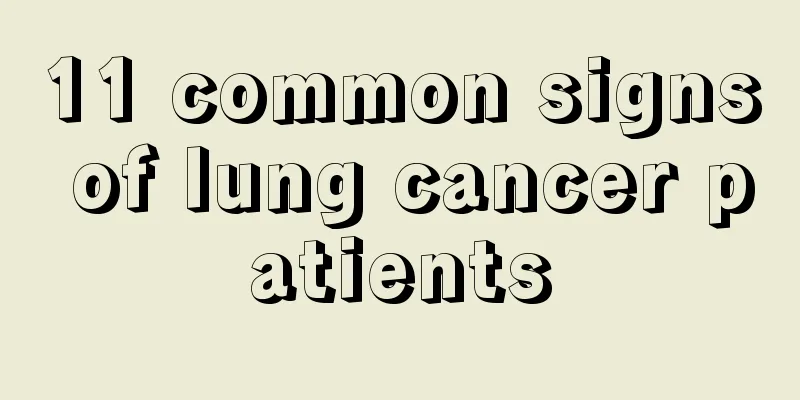11 common signs of lung cancer patients

|
Lung cancer patients generally do not have any special signs in the early stages, but as the disease progresses and cancer cells metastasize and spread, patients will develop some corresponding special signs, mainly the following eleven signs: 1. Localized wheezing usually occurs during the inspiratory phase and does not disappear after coughing. 2. Hoarseness occurs when lymph node metastasis compresses or invades the recurrent laryngeal nerve. 3. Superior vena cava syndrome Tumors compress or invade the superior vena cava, venous return is blocked, resulting in edema of the head, face, neck and upper limbs, varicose veins and edema in the upper chest, accompanied by symptoms such as dizziness, chest tightness and shortness of breath. 4. When the cancer at the apex of the lung compresses or invades the cervical sympathetic ganglion, the eyeball on the affected side will sink, the upper eyelid will droop, the pupil will constrict, the palpebral fissure will narrow, the skin temperature of the upper chest on the affected side will increase, and there will be no sweating. 5. Shoulder and arm pain When apex cancer compresses or invades the brachial plexus, radiating burning pain will occur in the shoulder and upper limb on that side. 6. Phrenic nerve paralysis: shortness of breath and chest tightness when the phrenic nerve is invaded 7. Dysphagia is caused by enlarged mediastinal lymph nodes compressing the esophagus, which can cause dyspnea due to tracheal compression. 8. Pericardial invasion When the pericardium is invaded, pericardial effusion, shortness of breath, arrhythmia, heart failure, etc. will occur. 9. Pleural metastasis may cause chest pain, cancerous pleural effusion, etc. 10. Lung cancer metastasis The common sites of hematogenous metastasis of lung cancer are bones, liver, brain, kidney, adrenal gland, subcutaneous tissue, etc. In addition, intramural metastasis of lung cancer is also common. Clinically, there are corresponding symptoms and signs depending on the different sites of metastasis. 11. Common extrapulmonary signs include pain or hypertrophy of joints in the limbs, clubbing of fingers, multiple neuritis, myasthenia gravis, Cushing's disease, male breast hyperplasia, hypercalcemia, mental disorders, etc. |
<<: 5 things to note when nursing closed chest drainage after lung cancer surgery
>>: How to detect liver cancer early in patients with hepatitis B
Recommend
What are the early stage diseases of lung tumor
Lung tumors are mostly malignant tumors, also kno...
How to wash kelp cleanly turns out to be like this
Kelp is a common food on the daily table, but how...
How terrible is the harm of thyroid cancer
Due to the irregularity, high pressure and fast p...
Sunburned people have an increased risk of melanoma. Three ways to prevent melanoma
Melanoma is a deadly skin cancer that is more com...
10 symptoms and warning signs of colorectal cancer
Clinically, there are no 10 major symptoms that i...
How to judge whether the nose bridge is high?
Young people nowadays spend a lot of time in fron...
What are the symptoms of bronchial bleeding?
The bronchi are an important component of our res...
What are the symptoms of brain metastasis from lung cancer? If lung cancer patients have these symptoms, it means brain metastasis
The appearance of lung cancer will undoubtedly ca...
What are the serious consequences of laryngeal cancer
Patients are very scared when they hear about can...
What should I do if I have a severe toothache?
Toothache is the most common oral disease. Most p...
What is the prognosis of ankylosing spondylitis
Ankylosing spondylitis is a chronic progressive i...
What are the symptoms of gastrointestinal cold?
Gastrointestinal colds are mainly related to gast...
What are the reasons for suffocation caused by snoring
In life, snoring while sleeping is very common. M...
The correct way to apply lotion
Whether the effect of women's makeup is good ...
What to do if you lose swallowing function due to nasopharyngeal cancer
What should I do if I lose my swallowing function...









